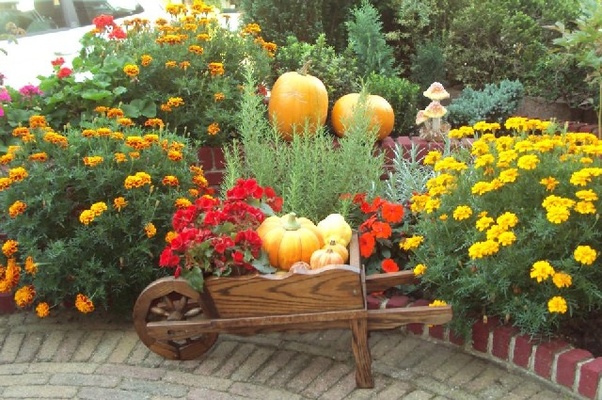Now is the time of year that you start to notice your summer plants beginning to lose their vibrant colours and die down. This means it’s time to start getting your autumn and winter plants in. The perennials in the garden will come back up in spring, so you only really need to plant to cover the time between August and March, which is when the spring and summer plants will begin to show their pretty little heads again.

Which plants should I choose for autumn?
If you want lovely vibrant colours in your garden, there are loads of great plants to choose from. Typical autumn colours include reds, oranges, browns and yellows. Purple Emperor (sedem telephium) is a good strong plant with ‘red wine’ coloured heads that look great in an autumn garden. Another lovely autumn plant is called Sahin’s Early Flowerer which is an orange daisy with a brown coloured centre. A great feature of this plant is that you can remove the dead heads from it in order to get repeat flowering during the autumn. Another good option is Gaura lindheimeri, which has lovely little white flowers that last right through to November.
Which plants should I choose for winter?
Autumnalis is a fantastic and very pretty plant which begins to blossom in November and will last right through to February, just before spring comes. This plant has beautiful little white blossom flowers on tough, dark stems and they really do brighten up the winter garden. For a little more variety and some lush green foliage, go for the sarcococca confuse. This plant has lovely mid-green shiny foliage that lasts all the way through the winter months, and it begins with lovely smelling cream coloured flowers before the dark black berries appear. A great winter honeysuckle is the Winter Beauty (lonicera x purpusii), which is a beautiful fragrant plant with stunning cream flowers. This is a great winter choice because it flowers very early in the year – normally between December and March.
Tips for autumn and winter planting
One great idea before you start, is to get some planters so that you can move the plants inside easily in case of an early frost. This can save the plants in their early stages as the weather gets colder. It’s best to start planting around August or September for your autumn and winter plants to flourish when you want them to.
Make sure that you do keep an eye on the weather when the plants are young and cover them with plastic sheets or hessian for colder nights. If you think there may be a frost, consider moving them in the planters to a shed, out-house, or even inside for the night. Once the plants get stronger and bigger, you can transfer them to the ground (around the end of October) so that they are in place and can settle into the new soil. Remember when you’re transferring them into the ground to use some of the soil from the planters that you’re moving them from to line the holes in the new soil. This will mean that the plants are used to the soil that they are in.
Written by Sam Luther, an experienced blogger and passionate gardener
What And How To Plant For Autumn

